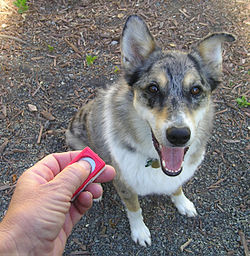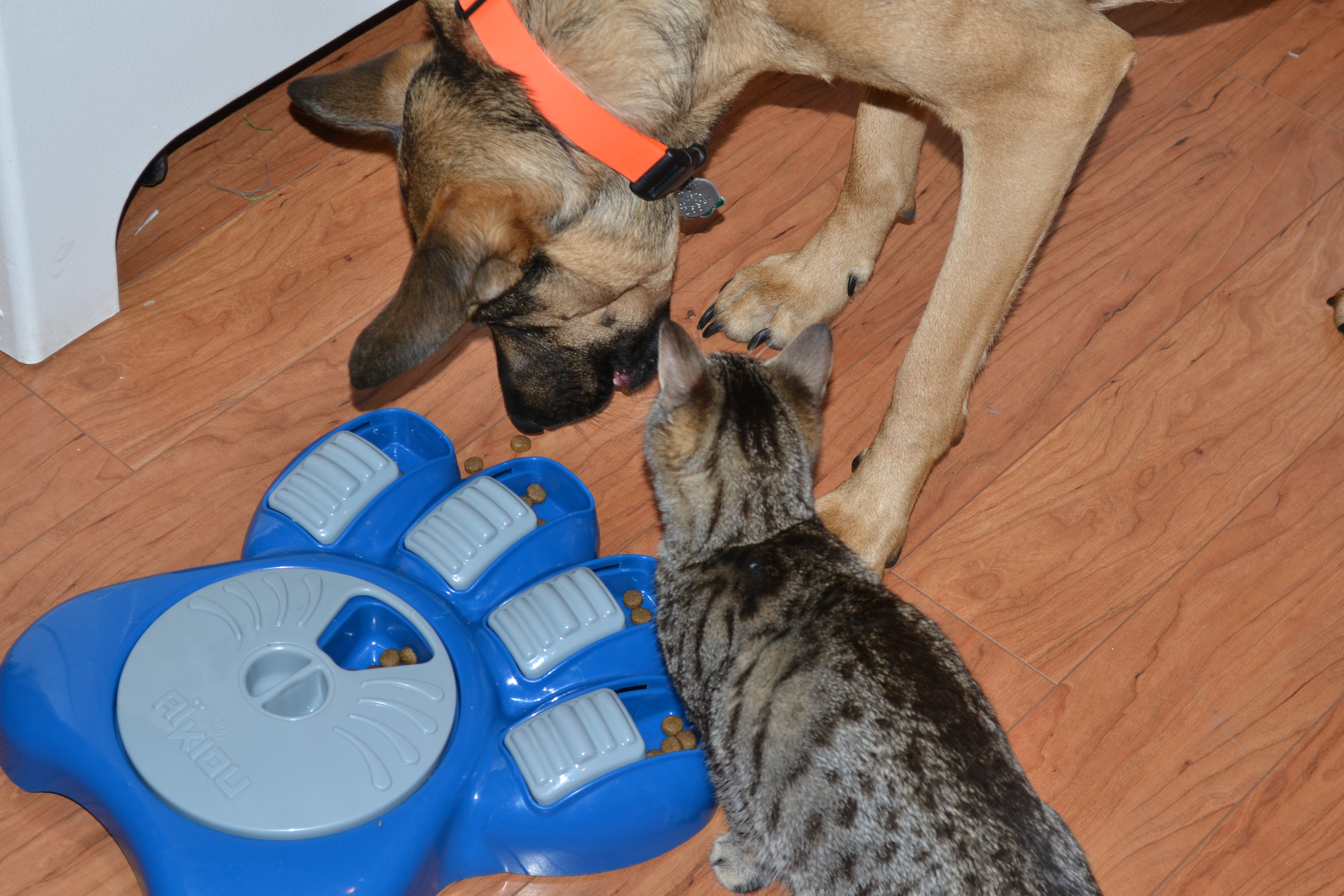Some tips on becoming a great clicker trainer!
Clicker training is part of being a positive trainer. So far I have used the clicker for two completely different techniques. One technique is to teach the dog a trick or cue and the other is to start building positive associations for things that may scare my dog. Both methods have their own goal and at first I thought it would confuse the dog. Fortunately, he wasn’t even fazed!
First, charge the clicker. If the dog has never heard a clicker before, it can spook them. There are some tricks that can reduce the sound of the clicker so you won’t spook your dog when you start. One of those is to stick a little piece of cardboard inside the clicker to dull the sharpness of the sound. You want to build a *super* positive association to the click! Your dog should know that when he hears that sound, he WILL get a treat. So that brings me to my second point.
Second, timing is everything! Since your dog knows that he will get a treat every time he hears the click sound, you have to make sure the click is marking the correct behavior. If you are to fast or too slow, you’ll be marking the behavior he did right before or after (respectively) the behavior you meant to mark. With that said, if you do click at the wrong time you should still give a treat. You do not want your dog to hesitate when he hears the click and think “maybe I will get a treat, but maybe I won’t..” This will decrease his motivation to work for the click. One or two mess ups will not do much damage to your task at hand so do not fret about it!
Third, watch your dog. Lots of people look at their dog with out really seeing what is going on. Observe where your dog is looking – your hand or your eyes? Observe where he is in relation to your body – in front or beside you? Is he excited to be learning or does he look stressed? All of these observations may seem minor, but they are crucial to your dog’s learning.
These tips are important for teaching your dog new commands or cues. The other method I mentioned, building a positive association to a scary thing (“trigger”), uses the association built with the clicker to build better associations with triggers. With correction or aversive training, the dog would receive a jerk or shock at the neck to discourage barking, growling, or other nuisance behavior. With most dogs, this stops the behavior from occurring because the dog wants to avoid pain (naturally!). My dog, Loker, actually got worse and his intensity increased with every little bit of tension on the leash which is why I had to leave corrections in my past. The “Click the Trigger” method is much more relaxing and enjoyable than jerking your dog around.
When you “Click the Trigger”, you want to stay under threshold – meaning you want to stay far enough away to prevent your dog from acting up more than simply looking at the trigger. When the dog looks at the trigger, click immediately and treat! After some consistent practice, your dog will start up a habit of seeing the trigger and looking right to you for his treat instead of getting agitated. You can see how this method builds a new reaction to the trigger rather than just suppressing it. In the long run, you will worry much less and you will be able to relax while walking your dog – which is the goal right?!! 🙂
(Photo by Ellen Levy Finch under Creative Commons license. See http://commons.wikimedia.org/wiki/File:Dog_clicker_training.jpg for details)



